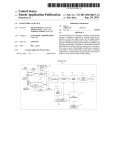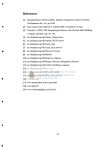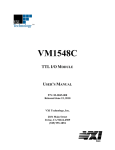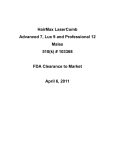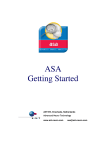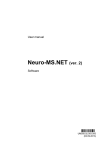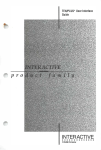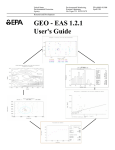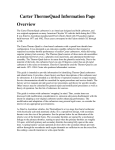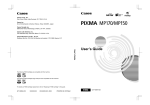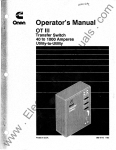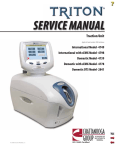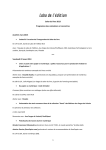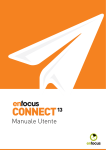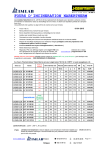Download K102610
Transcript
510(k) SummaryMA
for the TeleEMG, LLC
Focus
-4
rj
MR-421
(per 21 CFR 807.92 and IztpIAww. fda.zov/MedicalDevices/lDeiceReeulationandGuidance/dletaultht
1. SUBMITTEiiI51O(K) HOLDER
TeleEMG, LLC
65 Arlington Road
Woburn, MA 0 180 1, USA
Contact Person:
Telephone:
Date Prepared:
Joe F. Jabre, M.D.
617-840-3253
August 10, 2010
2. DEvICE NAME
Proprietary Name:
Common/Usual Name:
Classification Name:
Product Code:
3.
Focus EMG Device
Diagnostic Electromyograph
Diagnostic Electromyograph
IKN, JXE
PREDICATE DEVICES
* Nemus System, K073415
* Synergy LT, K98 1405
4. DEvici
DESCRIPTION
Physical Description
The Focus is a 2-channel neurodiagnostic testing system designed to enable reliable
recording, display and documentation of electrophysiological information from the
human nervous and muscular systems in a clinical environment. The system enables
the healthcare provider to perform evoked potentials, nerve conductions and needle
EMG studies as an aid in the evaluation of patients with central and peripheral nervous
system symptoms.
The device provides functionality for the Electromyography (EMG), Nerve
Conduction Studies (NCS), and Evoked Potential (EP) testing for a range of clinical
applications and has a fast, intuitive and flexible graphical user interface (GUI) that
conforms to a Windows philosophy.
The Focus provides the healthcare professional with:
TeleEMO LLC, Traditional 5 10(k)
-
Focus K1 02610
page 5- 1
- A means of adjusting or activating all of the unit's settings and controls.
* Multiple ways in which a user can carry a task, such as from a menu, using the
mouse or the keyboard or by double-clicking on an icon.
* Configurable function keys and fields that enable the user to customize the
interface to meet their requirements.
* Single-stroke keyboard function keys for key tasks carried out during a patient
examination.
In addition to using the GUI, key tasks can be carried out via control switches on the
Control Panel, Patient Interface Unit, Amplifiers, and Footswitch.
Intended Use
The Focus is intended for use by a healthcare provider to perform nerve conductions
and EMG studies as an aid in the evaluation of patients with diseases of muscle and
nerves. The machine can also use electrical stimulus or sound stimulus for evoked
potentials (EP) studies.
How the Device Functions
The device's principle of operation is based on the recording and input of electrical
physiological signals (biopotentials) to a computer with the purpose of its analysis.
The functional scheme of the device is represented in the figure below:
TeICEMG LLC, Traditional 5 10O(k)
-
Focus K 102610
page 5- 2
From
eldrod.3o
++
o
+
ldoeoESO
-
D
-
5
~CUTPUT
-
Figure 5-1. Device Functional Scheme
EMG biopotentials are amplified by the channels amplifier (CA) and quantized by
time and level with the use of the analog-digital converter (ADC) under the control of
microcontroller MCI. The commands of the microcontroller MCI control are
transferred from the microcontroller MC4 via the galvanic isolation device (GID), the
counts of the input signal are delivered in the reverse direction.
The microcontroller MCI controls the gain and bandpass of EMG channels amplifiers,
is used in the calibration procedures and electrode impedance measurement, and
performs the internal diagnostic operations.
The power supply of the amplifier unit is done via the galvanically isolated direct
voltage transducer DVTi. The microcontroller MC4 controls the DVT1.
The galvanically isolated electrical stimulator unit includes the electrical stimulus
generator (ESG). The microcontroller MCI specifies the pulse amplitude and duration
for the electrical stimulus generator. ESG unit measures the value of the real stimulus
current via a patient and transfers it to the microcontroller MCI.
The control of the auditory stimulator, photic stimulator and checkerboard stimulator
TeleEMG LLC, Traditional 5 10(k)
-
Focus K 102610
page 5- 3
is performed via the corresponding auditory, photic, checkerboard pattern generators
with the use of the microcontroller MC2 which receives the commands from the
computer via MC4.
The microcontroller MC3 performs the displaying of the information to the indicator
and entering of information from the buttons, encoders, footswitch and patient button.
The given block is located constructively on a separate board.
The microcontroller MC4 also generates the synchro-signal input/output.
The supply unit (SU) transforms the supplying voltage of USB bus to 3.3 V voltage
which is required for MC4 operation.
The device operates under control of a PC (IBM PC type) with the mouse, keyboard,
laser or jet printer and an installed licensed Windows operational system.
The electronic unit is attached to the USB connector of a computer via the interface
cable.
TeleSMG LLC, Traditional 5 10(k)
-
Focus K 1026 10
page 5- 4
Significant Physical and Performance Characteristics of the Device, such as
Device Design, Material Used, and Physical Progerties
The Focus EMG Device consists of a handheld electronic unit, a stimulator unit with
steel electrodes and felt pads, and a footswitch.
z
Figure 5-2. The Electronic Unit
Table 5-1. Controls for Handheld Unit
Menu Command/Action
Button/Encoder
ecustolmeac
4
4
Key ITabi (intended for switching between input and traces review
wndows)
etrviu
,TestlNext,
TracejNext
AcquisitionlAccuniulation/avtragiflg
TeleEMG LLC, Traditional 5 10(k) - Focus K 102610
page 5- 5
V
AcquisitionJStzmuius protocol (autoincreindnt)
%
AcquisitionICanceI, same as lEsci key
Esc
AcquisitionlMonitoring
p
AcquisitionjRepetitive stimiulation
AcquisitionlPause
acquisition/stimulus
Admft.AcquisitionjStart
AcquisitionjStop
Tracel Markerl Move left
and TracelMarkerlMove right
(rotation)
_____________________________
TeleEMG LLC, Traditional 5 10O(k)
-
Focus K 102610
____
page 5- 6
Table 5-1. Controls for Handheld Unit
(Continued)
Menu Command/Action
marker
Selection of next
Button/Encoder
0
________________________________________
(pressing)
ViewSweeplncrease and ViewlSweeplecrease
G
H
_________________________________
ViewlSensitivityl Increase
and ViewiSensitivityjDecrease
(rotation)
(rotation)
AcquisitionlStim ulusllIncrease stimulus duration and
AcquisitionjStimuluslflecrease Stimulus duration
(rotation)
For tests with stimulation: Acquisition IStimuluslStimulus increase
and Acquisition IStimuluslStimulus decrease. For tests without
stim ulation: Acquisition ISoundI Volume up and Acquisition
ISoundi Volume down
4D
lru
(rotation)
________________________________________
For tests without stimulation: AcquisitionlSoundjSound on/off
(pressing)
__________________________________
The connectors that attach electrodes for measuring potentials are shown in Figure 5-3.
I+ - touch-proof connector for anode, channel one.
I-- touch-proof connector for cathode, channel one,
2+- touch-proof connector for anode, channel two.
2-- touch-proof connector for cathode, channel two.
--
Ground connector.
Figure 5-3. Panel View showing Electrode Connectors
TeleEMG LLC, Traditional 5 10(k)
-
Focus K 1026 10
page 5- 7
View of the panel with connectors for the stimulators is given in Figure 5-4.
40
* 3OV..2O~,A'~*
4
®
tj
C-1
electrical stimulator connector.
0<>-connector for U5B computer attachment.
for photic or checkerboard stimulation pattern attachment.
-connector
14 - auditory stimulator connector.
&_ trig in/out connector.
A4 patient button connector.
-
-
-
ootswitch connector.
Figure 5-4. Panel View showing Stimulator Connectors
The electronic unit measures 92x167x46 mim and weighs .35kg.
ThefooswichFigure 5-5. The Stimulator Unit
Thefooswichallows the operator to control the electronic unit. The footswitch
measures I 03x273x43 mm and weighs 1 kg.
Figure 5-6. Foot Switch
The auditory stimulator is used for auditory Evoked Potentials testing. It is connected
to the device via the auditory stimulator connection.
TeleEMG LLC, Traditional 5 10(k)
-
Focus K102610page
5- 8
Mulbply Transducer Cafibration
Intnsty0-126
I~olrtv-ye.
Stonaton Frequency_
Tone Frequency10-00H
Support up to 6 different transducers
with saed calibration values
dB SPL 0-96dBHL
-+ve or alternabrnE
0.05-30 Hz
Pips~on
Itenity0-126
Bwts
Present atianLetIRIt/Boxa
Louzpekes
dBSPL, 0-9ddBHL
Eteral (comuter)
Figure 5-6. Foot Switch
The LED goggles are used in the "Flash Visual EP Test". They are connected via the
connector for photic or checkerboard stimulation pattern.
[Maxmnurtnes
of EDgogje
(1100± 110)kdhr?
1-500 m
Flash Duran
Stimulation Frequency
Pr~esentatuon
0.05-50 Hz
Left/ight/th-
Figure 5-6. Technical Characteristics of the LED Goggles
5.
INTENDED USE
The Focus is intended for use by a healthcare provider to perform nerve conductions
and EMG studies as an aid in the evaluation of patients with diseases of muscle and
nerves. The machine can also use electrical stimulus or sound stimulus for evoked
potentials (EP) studies.
TeleEMG LLC, Traditional 5 10(k)
-
Focus K102610
page 5- 9
6.
SUMMARY
OF TECHNOLOGICAL
THE\PREDICATE DEVICE
CHARACTERISTICS
COMPARED
TO
Table 5-2. Side-by-Side Comparison of the Proposed Device with Cited Predicate
Devices
PRODUCT
FEATURES
FOCUS EMG DEVICE
NEUROSOFT, LTD.
NEMUS SYSTEM
EBNEURO S.P.A.
Intended Use
The Focus is intended for use
by a healthcare provider to
perform nerve conductions and
EMG studies as an aid in the
evaluation of patients with
diseases of muscle and nerves,
The machine can also use
electrical stimulus or sound
stimulus for evoked potentials
(EP) studies.
The NEMUS system is
intended to monitor,
record and display the
bioclectric signal produced by
the muscles, to stimulate
peripheral nerves, and
to monitor, record and display
the electrical activity produced
by nerves to aid the clinician in
the diagnosis and prognosis of
neuro-muscular diseases
(EMO). The device may use
electrical stimulus or sound
stimulus for use in evoked
Warnings
Contraindications
Items related to off-label use.
Items related to design and
indicated use limitations, such
as not for use in the presence of
flammable anesthetics or in
conjunction with defibrillation
K(073415
_____________PROPOSED
:n -
__________________Desi
Computer based equipment
with dedicated hardware
________________peripherals/components
UGser input device
-
User output device
Patient inputs
Signal acquisition
________________variable
Trigger input
(synchronization to
external events)
Trigger output
(synchronization for
Items related to off-label use.
Items related to design and
indicated use limitations, such
as not for use in the presence of
flammable anesthetics or in
conjunction with defibrillation
equipment.
_______________equipment,
Microsoft Windows
mouse/keyboard driven graphic
interface. Built-in keyboard
Items related to off-label use.
Items related to design and
indicated use limitations, such
as not for use in the presence of
flammable anesthetics
______________
General
Computer based equipment
with dedicated hardware
peripherals/components
Microsoft Windows mouse
keyboard driven graphic
interface. Dedicated external
Computer based equipment
with dedicated hardware
_peripherals/components
Microsoft Windows
mouse/keyboard driven graphic
interface.
keyboard (optional)
_____________
Digital color display
Commercial printers
2 channels preamnplifiers,
isolated
Analog-to-digital conversion at
sampling rate
Yes
Digital color display
Commercial printers
2 channels preamplifiers,
isolated
Analog-to-digital conversion at
variable sampling rate
Yes
Digital color display
Commercial printers
2 channels preamplifiers,
isolated
Analog-to-digital conversion at
variable sampling rate
Yes
Yes
Yes
Yes
Yes
Yes (Optional)
external devices)
I_______________
Footswitch for handsfree operation
Use of standard
K(981405
2 channel electromyograph
which provides facilities for
EMO and Evoked Potentials
testing for a range of clinical
application. Synergy LT is
designed to enable reliable
recording display and
documentation of
eleetrophysiological
information from the human
nervous and muscular system in
a clinical environment.
measurements (EP).
_________________________response
General system
approach
SYNERGY LT
OXFORD INSTRUMENTS
Yes
____________________________
YES
-
Microsoft Windows
TeleEMG LLC, Traditional 5 10(k)
-
YES -
Microsoft Windows
Focus K1 02610
YES
-
Microsoft Windows
page 5-10
Table 5-2. Side-by-Side Comparison of the Proposed Device with Cited Predicate
Devices (Continued)
PRODUCT
FEATURES
Customnization of
clinical protocols
Application flexibility
/expandability
Safety Standards
FOCUS EMC DEVICE
NEUROSOFT, LTD.
PROPOSED
Via storage!/ retrieval of userdefined settings
Via software update
NEMUS SYSTEM
ERNEURO S.P.A.
K073415
Via storage / retrieval of userdefined se~ttings
Via software update
60601-1-1-2000
60601-1-2-2001
60601-1-2-40-1998
6247 1-2006
lEG
lEC
IEC
lEG
60601 -1
60601-1-1
60601-2-26
60601-2-40
_______________
System Components
Headbox (Amplifier)
Computer (PC)
Cart
Printer (optional)
Nemnus I Base Unit
(Amplifier) Host
Computer (PC) Printer
(optional) Cart (optional)
Dedicated Keyboard
Focus EMO Device
USH Cable
Footswitch
Electrical Stimulator
Notebook PC based system
(optional)
_______________
Proprietary
LAN Ethernet 100 Mbit
USB
Amplifier- Computer
interface
_______________________________
System Power Supply
Electronic unit: 5V DC System
with Personal Computer: 100120/200-240 V AC (50-60 Hz)
System with Notebook: 100V AC (50-60 Hz)
_________________120/200-240
From mains(l110-240 VAC)
trough isolation transformer
______________________
Electronic Unit: 0.35
System: 3-5
cart,_monitor,_arm)
________________________
Design
-
2
>100 dB;
< 0. 6 lVrms.
Number of channels
CTMRR
Noise
_______________(
< 25pF
_> 100. Mm
(-12dB/octave) 10, 20, 35, 50,
75, 100,150, 200, 300, 500,
1000, 2000, 3000, 5000, 10000
Hz
(-6dB/octave) 0.05, 0.1, 0.2,
0.3, 0-5, 1, 2, 3,5, 10, 20, 30,
50, 100, 200, 300, 500, 1000,
2000, 3000 Hz
50/60 Hz selectable
16 Bit ADC
200-80000 Hz
2 ms-S mi
Single
TeleEMG LLC, Traditional 510(k)
-
500/209/321
(cart : 720/640/780)
Nemus System:
1250/750/850 (complete
sytem wit cat, onitor, arm)
Nemus System: 90
(complete system, with
Electronic Unit:
90x27Ox50 nun
Weight (complete
systemn-kg)
Internal power supply
15 VDC from medical
approvedAC/DC converter
_______________________
Sie(1-IW/D) mm
Prom mains (110-240 VAC)
_____________
5V DC from 058
Amplifier Power Supply
Notch filter
A/fl conversion
Sampling rate
Analysi im
Time base
Optic
Optic
Optic/transformer
isolation
High pass filter
TEC 60601-1
EG 60601-1-2
_________________
Patient circuitry
Input impedance
Low pass filter
SYNERGY LT
OXFORD INSTRUMENTS
K981405
Via storage / retrieval of userdefined settings
Via software update
Focus
55 (with cart)
_____________
Acquisition
2
>110dB
<0.7 pVrms
(0.1 Hz- 10 kd-z)
2
>100 dB
< 0.3 pVrms (0.1 - 00 Hz) <
20 nV/ 4Hz
1Hz-IOU-li)
> 1000 MOhm / 8 pP
20 Hz - 16kHz (15 step)
> 1000 M~hm /30 pF
50 Hz - 16 kHz (10step)
0.01 -500 Hz (I I step)
DC, 30 - 2000 Hzl
50/60 Hz selectable
24 bit Sigma-Delta
4.194 MHz
5 ms-l10s
SigeSingle
50/60 Hz selectable
16 bit
50 kHz
ms-l10s
K102610
15
page 5-11
Table 5-2. Side-by-Side Comparison of the Proposed Device with Cited Predicate
Devices (Continued)
PRODUCT
FEATURES
Tri~gger mode
Signal delay (pre/post)
Ohmmeter
Somatosensory
(electrical ) Stimulator
FOCUS EMO DEVICE
NEUROSOFT, LTD.
PROPOSED
Free, Auto, Internal, External
0-l0s
0-100 kOhm
Design
Type: constant current
N. output I
Max output: 100 mA Pulse
width: 0.1 - 5 ms Mode: single,
(50 Hz)
________________train
Audio Stimulator
Output mode: click, tone
Sound pressure: 0-126 dB SPL
(TDH 39)
Phase: condens., raref, alternate
Signal frequency: 1008000 Hz
Click width: 1O0-5000 ps
Stimulus presen. Left, right,
binaural
Headset: 'JUN 39
NEMUS SYSTEM
EBNEURO S.P.A.
K073415
Free, Auto, Internal, External
0-5 div
0-100 kOhm (auto full scale)
- Stimulators
Type: constant current
N. output I
Max output: 100 mA Pulse
width: 0.05 - I ms Mode:
single, double, train (200Hz)
Output mode: click, tone
Sound pressure: 0-132dBi SPL
Phase: condens., raref, alternate
Signal frequency: 1258000 Hz
Plateau time: 1-200 ms
Rise/fall time: 1-100 ins Mask
level: -40* +±10dB (relative)
Click width: 1-100 ps Stimulus
presen. Left, right, binaural
Headset: TDH 39
Output mode: click, pip, tone
Sound pressure: 0- 122 dB SPL
Phase: condens., raref, alternate
Signal frequency: 1258000 Hz
Plateau time: 1-999 mns
Rise/fall time; 1-255 mns Mask
level: -40 + +10 dB (relative)
Click width: 0.05 - I mns
Stimulus presen. Left, right,
binaural
Headset: TDH 39
Yes
Yes
Yes
Yes
Yes
Spontaneous activity
Single fiber EMO
Yes
Motor Unit Analysis
Fwave analysis
Yes
Yes
Yes
Yes
Yes
Yes
Yes
Yes
No
No
Self triggered
acqdisition
Type: constant current/voltage
N. output::1
Max output: 100 mA
Pulse width: 0.05-1 ms Mode:
single, train
Basic EMGApplication Modules
Free run acquisition
Nerve conduction study
SYNERGY LT
OXFORD INSTRUMENTS
K(981405
Auto, Internal, External0 - 9 div
-0-32
kOhm
______________
Yes
Yes
Yes
Yes
_______________
li-Reflex analysis
Galvanic Skin Response
Also known as
Sympathetic Skin
Yes
EP
____________________Basic
AmiaonModules
Yes
Yes
Yes
Yes
Yes
Yes (Referred to as
Sypathetic Skin Response or
SSR)
_____________
Somatosensory EP
Auditory EP
Visual EP (flash)
Yes
Yes
Yes
Yes
Yes
Yes
No
Yes
P300 EP
Yes
No
VisualEP (pattern)
Yes
Yes
No
Yes
7. SUMMARY
OF NON-CLINICAL
SUBSTANTIAL EQUIVALENCE
PERFORMANCE
Yes
TESTING As
BASIS
FOR
Performance Testinu
Performance evaluation of the features described in the Focus user's manual has been
successfully completed utilizing hardware and software tests and validations.
Hardware qualification is performed using the following industry standards:
Te~eEMG LLC, Traditional 5 10(k)
-
Focus K10261 0
page 5-12
* JEC 60601-1-1:2000 Medical electric equipment Part 1-1: Safety requirements for
medica electrical systems
* TEC 60601-1-2:2001 Medical electric equipment Part 1-2: General requirements
for safety - Collateral standard: Electromagnetic compatibility -Requirements and
tests
* IEC 60601-2-40:1998 Medical electric equipment Part 2-40: Particular
requirements for the safety of electromyographs and evoked response equipment
* JEC 62471:2006 The TeleEMG Focus EMG Device has met the LEG 62471:2006:
Photobiological safety of lamps mid lamp systems. According to lEG 62471, our
LED goggles luminance is 1,203 cdlm2 that is much less than the admissible level
10,000 cd/m2 specified in clause 4. 1 of this standard. That is why it is not required
to make additional spectral calculations according to IEC 62471.
The TeleEMG Focus is of a "moderate" level of concern according to the FDA draft
software guidance document ("Guidance for the Content of Premarket Submissions for
Software Contained in Medical Devices"), and meets the requirements set forth in the
FDA draft software guidance document for a "moderate" in the level of concern
device.
Biocompatibilitv Testing
The only patient contacting surfaces of the Focus EMG device are the stainless steel
ekecttodes and felt pads applied during testing. The electrodes and pads were cleared
under the submission of the NC Stat, K060584.
8. SUMMARY
OF
EQUIVALENCE
TESTING
CLINICAL
As
BASIS
FOR
SUBSTANTIAL
No clinical testing was conducted to support this submission.
9. SUMMARY OF OTHER INFORMATION
No other information is available.
10. CONCLUSIONS DRAWN FROM NON-CLINICAL AND CLINICAL TESTS
Based on the information and supporting documentation provided in the premarket
notifica tion, the Focus EMG Device is substantially equivalent to the cited predicate
device. Testing demonstrates that the Focus EMG Device fulfills prospectively defined
design and performance specifications.
TeleEMG LLC, Traditional 5 10(k)
-
Focus K102610
page 5-13
4DEPARTMENT
OF HEALTH & HUMAN SERVICES
Public Health Ser vice
Food and Drug Admrinistration
10903 New H-amp)sh ire Avenue
Document Control Room -V066-G609
Silver Spring, IMVD
20993-0002
TeIcEMG, LLC
c/0 Joe F. Jabre, M.D.
65 Arlington RoadWoburn, MA 0 1801
2I
Re: Kl026l0
Trade/Device Name: Focus EMG
Regulation Number: 21 CER 890.1375
Regulation Name: Diagnostic Electromyograph
Regulatory Class: Class [I
Product Code: IKN, JXE
Dated: January 22, 2011
Received: January 24, 2011
Dear Dr. Jabre:
We have reviewed your Section 5 10(k) premarket notification of intent to market the device
referenced above and have determined the device is substantially equivalent (for the indications
for use stated in the enclosure) to legally marketed predicate devices marketed in interstate
commerce prior to May 28, 1976, the enactment date of the Medical Device Amendments, or to
devices that have been reclassified in accordance with the provisions of the Federal Food, Drug,
and Cosmetic Act (Act) that do not require approval of a premarket approval application (PMA).
You may, therefore, market the device, subject to the general controls provisions of the Act. The
general controls provisions of the Act include requirements for annual registration, listing of
devices, good manufacturing practice, labeling, and prohibitions against misbranding and
adulteration. Please note: CDRH does not evaluate information related to contract liability
warranties. We remind you, however, that device labeling must be truthful and not misleading.
If your device is classified (see above) into either class 11 (Special Controls) or class III (PMA), it
may be subject to additional controls. Existing major regulations affecting your device can be
found in the Code of Federal Regulations, Title 21, Parts 800 to 898.. In addition, FDA may
publish further announcements concerning your device in the Federal Register.
Page 2 - Joe F. Jabre, M.D.
Please be advised that FDA's issuance of a substantial equivalence determination does not mean
that FDA has made a determination that your device complies with other requirements of the Act
or any Federal statutes and regulations administered by other Federal agencies. You must
comply with all the Act's requirements, including, but not limited to: registration and listing (21
CFR Part 807); labeling (21 CFR Part 801); mnedical device reporting (reporting of medical
dlevice-related adverse events) (21 CFR 803); good manufacturing practice requirements as set
forth in the quality systems (QS) regulation (21 CFR Part 820); and if applicable, thle electronic
product radiation control provisions (Sections 53 1-542 of the Act); 21 CFR 1000- 1050.
If you desire specific advice for your device on our labeling regulation (21 CFR Part 801), please
go to http://www.fda.4yov/AboutFDA/CentersOffices/CDRH/CDRHofniceS/ictii II5809.h1tm for
the Center for Devices and Radiological Health's (CDRH's) Office of Compliance. Also, please
note the regulation entitled, "~Misbranding by reference to premnarket notification" (21 CER Part
807.97). For questions regarding the reporting of adverse events under the MDR regulation (21
CFR Part 803), please go to
littp://www.fda.uov/MedicalDevices/Safetvy/ReportaProblem/defaulthtiiu for the CDRH's Office
of Surveillance and Biometrics/Division of Postmarket Surveillance.
You may obtain other general information on your responsibilities under the Act from the
Division of Small Manufacturers, International and Consumer Assistance at its toll-free number
(800) 638-2041 br (301) 796-7 100 or at its Internet address
http://www. fda.gov/MedicalDevices/ResourcesforYou/Industry/defaulthtm.
Sincerely yours,
Malvina B. Eydelman, M.D.
Director
Division of Ophthalmic, Neurological,
and Ear, Nose and Throat Devices
Office of Device Evaluation
*Center for Devices and
Radiological Health
Enclosure
Indications for Use
5 10(k) Number (if known): K 1026 10
Device Name:
Focus EMG Device
Indications for Use:
The Focus is intended for use by a healthcare provider to perform nerve conductions and
EMG studies as an aid in the evaluation of patients with diseases of muscle and nerves.
The machine can also use electrical stimulus or sound stimulus for evoked potentials (EP)
studies.
Prescription Use X
AND/OR
(Part 21 CFR 80I Subpart D)
Over-The-Counter Use
(21 CFR 807 Subpart C
(PLEASE DO NOT WRITE BELOW TIS LINE-CONTINIJE ON ANOTHER PAGE IFNEEDED)
Concurrence of CDRH, Office of Device Evaluation (ODE)
(Division Signi-Off)
Division of Ophthalmic, Neurological and Ear,
Nose and Throat Devices
510(k)Numnbt er
TeleEMG Traditional 5 10(k) K 102610
121
Focus EMG Device
















